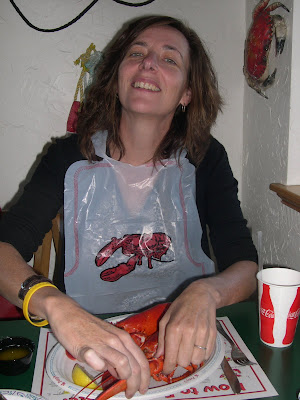
After the field season this summer and before returning stateside, the Mo and Yo sho made pilgrimage to a local theme park. We had visited this place before, back in 2004, when it first opened. We were curious to see what has changed at Mini Israel, an outdoor theme park with scale (mostly 1:25) models where you can "See It All Small".
 The park is set just at the foothills before the ascending road to Jerusalem, near the Latrun Monastery, and just across from the IDF "Tank Museum", which is also represented in miniature form at Mini Israel.
The park is set just at the foothills before the ascending road to Jerusalem, near the Latrun Monastery, and just across from the IDF "Tank Museum", which is also represented in miniature form at Mini Israel.
After paying a not-insignificant entrance fee, the visitor enters through turnstiles opening onto an outdoor plaza; to the right, one can pick up maps, an umbrella (to shelter one from the boiling heat of the coastal plain), or rent a covered golf cart.
 To the right is a cafeteria and the gift shop.
To the right is a cafeteria and the gift shop.
Visitors follow black topped paths snaking their way through this open area, leading first along the shore of the Mediterranean, where models of ships and docks

are just meters from imitation Caesarea.

Although the facsimiles of these buildings and sites appear to be careful copies, their relationship to each other is not; there is a general north-south and east-orientation, but the relative distance and proximity between sites is not represented. In fact, the site is in the shape of the Star of David (well, sort of - that's the intent anyway).



Some things haven't changed - miniature lakes and seas are generally dry or in some state of disrepair. The planes at the airport continue to jerkily cruise around on the ground.
 The same archaeological sites are represented, including the Middle Bronze gate at Tel Dan....
The same archaeological sites are represented, including the Middle Bronze gate at Tel Dan.... ...what we believe is a generic archaeological excavation near the Mediterranean shore....
...what we believe is a generic archaeological excavation near the Mediterranean shore.... ... the Dome of the Rock...
... the Dome of the Rock... and the western wall.
and the western wall. The bedouin camp is still represented, with everyone in traditional garb, including the women with water containers circulating around the camp tirelessly on their track.
The bedouin camp is still represented, with everyone in traditional garb, including the women with water containers circulating around the camp tirelessly on their track. And the Palestine Archaeological Museum, known as the Rockefeller, exists, still decontextualized from the East Jerusalem surroundings.
And the Palestine Archaeological Museum, known as the Rockefeller, exists, still decontextualized from the East Jerusalem surroundings. But other things are new. Most striking are various representations of industry giants of Israel: Sonol (gas), Prigat (juice), Tnuva (milk products), Arkia and El Al (airlines), as well as international conglomerates such as Yoplait and Coca-Cola.
But other things are new. Most striking are various representations of industry giants of Israel: Sonol (gas), Prigat (juice), Tnuva (milk products), Arkia and El Al (airlines), as well as international conglomerates such as Yoplait and Coca-Cola. The gift shop has changed rather dramatically. When it first opened, there was only one way out of the park - through the gift shop. Sale items in the old gift shop were a very eclectic array of kitsch, similar to what is available in many shops in the Old City. The new gift shop, which is no longer the exit from the park, is 'nicer', in that there is less kitsch, but sort of boring, in that it consists primarily of Ahava products (it seems Ahava probably bought the shop, or is a major owner) -- you know, salves, emollients, balms, unguents, lubricants, mud, salts and moisturizers. It looks more like the part of the department store you (well, Mo & Yo anyway) try to zip through quickly before someone spritzs you with something stinky.
The gift shop has changed rather dramatically. When it first opened, there was only one way out of the park - through the gift shop. Sale items in the old gift shop were a very eclectic array of kitsch, similar to what is available in many shops in the Old City. The new gift shop, which is no longer the exit from the park, is 'nicer', in that there is less kitsch, but sort of boring, in that it consists primarily of Ahava products (it seems Ahava probably bought the shop, or is a major owner) -- you know, salves, emollients, balms, unguents, lubricants, mud, salts and moisturizers. It looks more like the part of the department store you (well, Mo & Yo anyway) try to zip through quickly before someone spritzs you with something stinky.




































